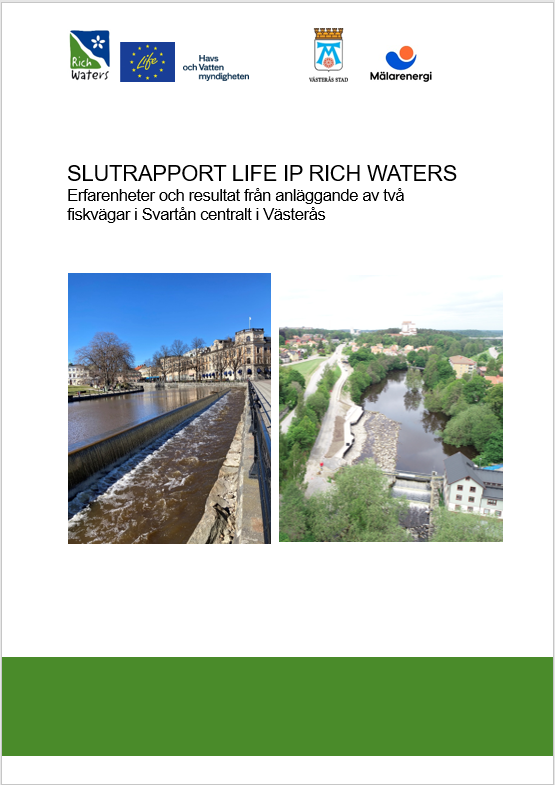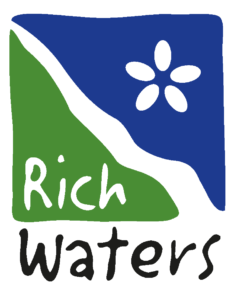
Read the whole report in Swedish
This report is primarily aimed at those municipalities, hydropower owners or other organizations that are planning to carry out similar projects. It summarizes the work steps, decisions and positions that have been made before and during the construction of each fauna passage and it also addresses issues relating to follow-up and communication. The report can provide an overview of what questions can be encountered in this type of project and what lessons have emerged during the work.
In central Västerås, Mälarenergi and the City of Västerås have built a fauna passage past the old Turbine House in Svartån. The Fauna Passage was inaugurated in the summer of 2019. The approximately 180-metre-long fauna passage is located in the middle of a sensitive cultural environment and the design has required great consideration for the surroundings. The dam at the Turbine House has for over a hundred years been the first migration obstacle in Svartån.
In 2024, the second stage of the project was also completed and also the second fauna passage in Svartån, at Falkenbergska kvarnen. This opened up more than nine kilometres of free migration routes in Svartån and large spawning areas that have long been impossible for migrating fish to access, have been made available.
Lake Mälaren is home to around 30 species of fish, many of which seek out watercourses and tributaries for reproduction or to find food and new habitats. Today, there are countless obstacles for migrating fish, in the form of ponds and road culverts, for example. There is also a shortage of running water, as large parts of the watercourses have been dammed and are thus today stagnant.
The city of Västerås has for a long time had plans to create a free migration route for fish from Lake Mälaren up into Svartån. Creating free migration routes for fish and other aquatic organisms is a crucial step on the road to good status in Svartån. A collaborative project with the County Administrative Board, Mälarenergi and affected parts of the municipality was conducted within the framework of LONA 2012-2016 and when the municipality was asked to participate in LIFE IP Rich Waters, it was decided to participate in the project and construct, among other things, two fauna passages in Svartån in central Västerås.
Aspen, which was the target species for the sub-project, is now back in Svartån and has shown an increasing trend. Several other red-listed species, such as eels and burbot, have migrated up the Svartån river and a total of 14 fish species have used the fauna passage at Turbinbron/Slottsbron. The fish migration at Falkenbergska kvarnen needs to be followed up in the coming years to see how it works.
In addition to that the fish migration is now working, the project has also led to increased knowledge about fish migration and an increased interest from the outside world. Several study visits have been carried out and many have taken part in the project’s experiences.
